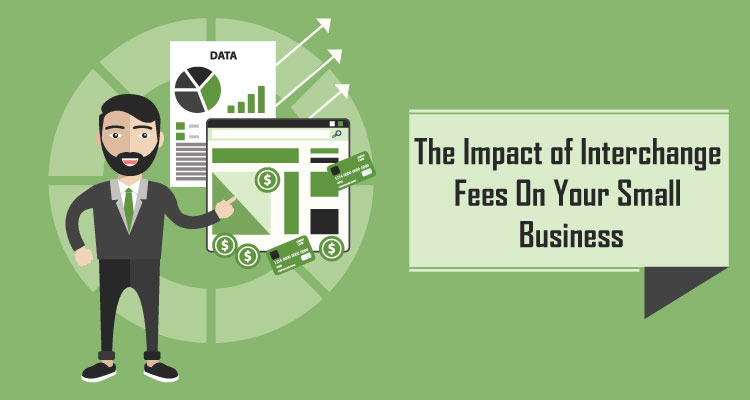Accepting credit or debit cards is almost a give-in for businesses of all-sizes these days. After all, they’re convenient, flexible, and can improve your bottom line since plastic is the most popular payment method.
The thing is, there’s a lot to consider before you just start swiping away. At the top of the list should be how much it’s going to cost your business. You may have to purchase hardware and software.
There may even may a number of processing fees as well. While some are avoidable, if you’re a small business owner processing credit cards, there may be no way around them. Various processing fees can have a major impact on your business.
An Overview of interchange fees?
Interchange fees are charges that a merchant’s bank account must pay the card-issuing bank (Visa, MasterCard, Discover) every time a customer uses their credit/debit card to make a purchase. This fee was put in place in order to cover handling costs, fraud, bad debt costs, and the risk of approving the transaction.
However, according to Visa, “the primary role of interchange is to create an equitable balance of incentives between a cardholder’s financial institution — which issues Visa cards to consumers — and a retailer’s financial institution that enrolls retailers and processes Visa transactions for them.”
Merchant’s are charged a percentage-based fee for every transaction by card-issuing banks, payment processors (which may or may not be the issuing bank), credit card payment networks (Visa, MasterCard, Discover), payment gateways, and even the merchant’s own bank.
These charges may appear as a single, bundled amount on your statement from your processor, but there are actually about 300 individual interchange fees composing the “single” interchange fee you actually pay each month.
Interchange rates, adjusted just twice a year (in April and October), and based on a few factors. They are based on current interest rates, the costs of moving money, and the risk involved of processing credit/debit payments.
When all’s said and done, interchange fees make-up 70 percent to 90 percent of the total fees paid to banks by merchants.

Are all interchange fees the same?
No. There are actually a number of factors that influence interchange fees. These include:
- Card type. Debit cards have lower fees because the risk of fraud is lower since the card is usually present.
- The type of business. Businesses like eCommerce sites, financial services,, and travel/hospitality are considered high risk. Because of this may have to pay higher interchange fees.
- The card brand. Each credit card sets their own rates. For example, Visa charges 1.510 percent + 10¢, MasterCard charges 1.580 percent + 10¢, American Express is 1.60 percent + 10¢, and Discover is 1.560 percent + 10¢.
- Business size. Businesses with a large amount of transactions may be able to negotiate a more favorable rate due to their klout. That’s bad news for small businesses that don’t have a large amount of transactions.
- Transaction type. Point-os-sale (POS) transactions don’t have the same amount of risk involved that card-not-present (CNP) do, since a chip can be inserted, a signature taken, or a PIN entered. Both mail-order-telephone-order (MOTO) and online orders are classed as CNP, which means that they’re charged a higher interchange rate.

Are all merchants affected?
“Every business that accepts credit cards is subject to interchange fees — even if those charges go by a different name,” states the folks over at BluePay. “When they were first introduced, these charges made a lot of sense since processing credit cards required a great deal of human involvement.
Today, however, these fees are mostly handled electronically, prompting many to question their value.”
In fact, in the U.S. alone, “interchange fees cost acquiring banks (and merchants) billions of dollars annually, while smaller merchants are responsible for paying “a disproportionate amount of these costs since they don’t have the size or volume to negotiate lower rates.”
There is a bright side. “Both businesses and regulators have begun closely examining interchange rate structures to look for instances of abuse.”
For instance, in 2005, several trade associations brought a class-action lawsuit against Visa and MasterCard. They accused them of price fixing and antitrust manipulation. The result was a suit settlement payout from Visa and MasterCard, for $7.25 billion.
Regardless of this victory, interchange fees aren’t going anywhere. It’s just the price you have to pay if you want to accept credit cards.
However, you can at least lower these fees by encouraging customers to use debit and PIN cards since those rates are lower, increasing the amount of transactions, and comparing the rates of various payment processors.
Unless your small business doesn’t process enough credit/debit cards to justify paying interchange fees, these are a necessary evil. You must overcome them if you want to please both your existing and prospective customers.













